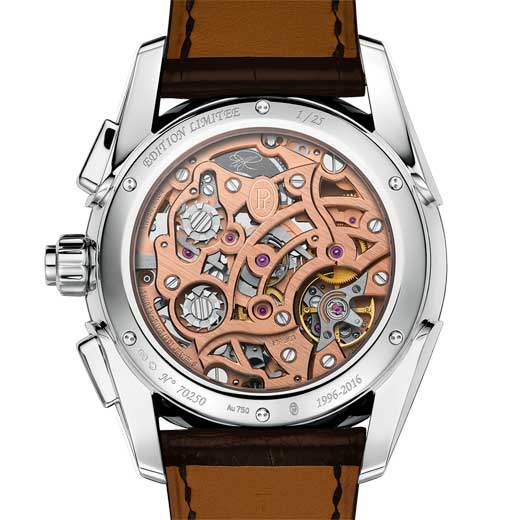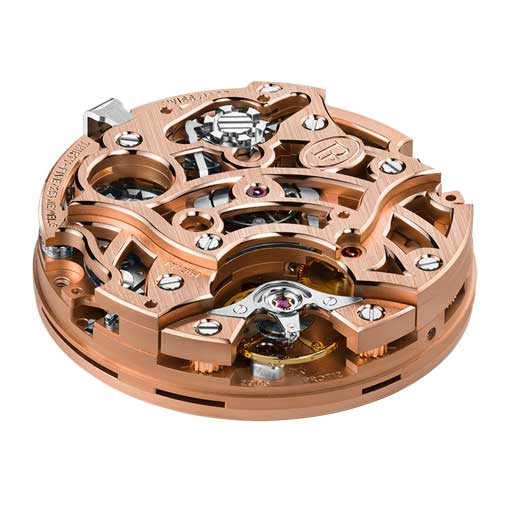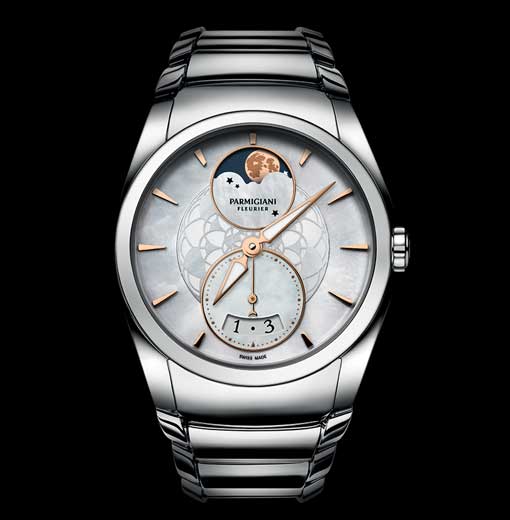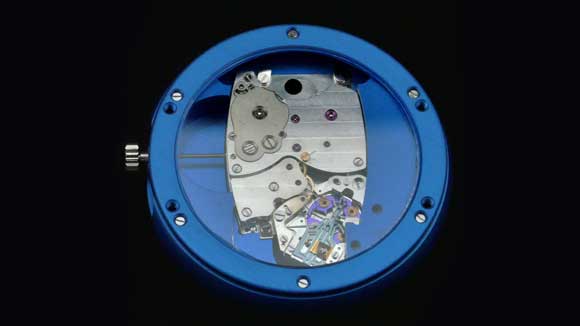Sometimes the simplest things are the most complicated, and vice versa. Such is the case with the flagship model presented by Parmigiani Fleurier at this year’s SIHH, the Tonda Chronor Anniversaire.
Its name is simplicity itself: Chronor from the French “chronographe en or”, meaning chronograph in gold. But the watch belies a technical complexity of which only a rare few are capable: a 100% in-house calibre with an integrated split-seconds chronograph, large date, made out of gold. The icing on the cake for collectors comes in the form of two numbers: two strictly limited editions for a total of 50 timepieces.

High-flying horology
In a media landscape where many brands claim “manufacture” status and the chronograph has become an everyday complication, it is easy to forget the requirements inherent in these two terms. Parmigiani Fleurier is vertically integrated: the company produces everything in house within the Sandoz Foundation’s watchmaking competence centre, which supplies the movements, dials, complications and everything else.
The chronograph complication is also integrated: there is no additional module on the movement. It has been developed from scratch and incorporates the chronograph function (and a big date) in one single mechanical ensemble.

Playing in the major league
Producing an integrated chronograph is not something new, but it has often been the preserve of centuries-old houses because of the complexity and the costs involved. A. Lange & Söhne, in particular, has staked out its claim in this territory, as have Patek Philippe and Vacheron Constantin. It’s all the more remarkable, therefore, that the young Parmigiani Fleurier has managed to reach this level of technological expertise in just 20 years.
“In order to produce this integrated chronograph, you need to master every one of the imposing and minute components that make it up; not just their manufacture but also their use, their operation within the calibre; you need to have experienced both their potential and their limits,” explains Michel Parmigiani. This is because the chronograph is a transmission chain in which each action determines and triggers the following action; each sequence must therefore be synchronised exactly and adjusted perfectly, because the slightest imperfection will be multiplied in series throughout the entire movement.

Last but not least, this movement is made of gold. This is malleable, sticks to tools and can deform; it means that the machines need to be completely recalibrated. Producing such a complex movement in gold therefore demonstrates considerable expertise.
A metrolunar attraction
Parmigiani Fleurier’s other talking piece is the Tonda Métropolitaine Sélène. This feminine piece is notable above all for its decoration: on the one hand, its flame-red moon, a rare colour for the watchmaking world; on the other, its dial decorated with a lotus flower whose contours consist of two threads of mother-of-pearl lace that are barely 0.2mm thick. The first layer, for the support, is varnished and then brushed, the second is polished. These alternating finishes create a distinctive play of light, contrasting with the different depths created by the two layers.

Genequand, finally!
To complement this creative duo, Parmigiani Fleurier opens an entirely new chapter! Its name: Senfine, which means “eternally” in Esperanto. The project is based on the Genequand escapement, an R&D folly whose first iteration was presented in the autumn of 2014, some 18 months ago.
It improves on the so-called “grasshopper” escapement invented by John Harrison in 1721, but here the comparison ends. The latter uses a system based on a pivot, a rigid element in rotation, while the Genequand escapement uses flexible blades that can transmit all the energy. In 1721, the escapement did not offer any shock resistance. Today, it’s all about suppleness and flexibility.
In short, the Senfine project totally rethinks the escapement and with it the inherent colossal loss of energy (estimated at over 60%). The result is a regulating organ that beats at 16 Hz (the initial project used 12.5 Hz). Today, the supersonic speed of the Senfine is therefore 115,200 vibrations per hour! As a result, the power reserve leaps to a staggering 45 days. But this is just a start, before the project reaches full speed!






